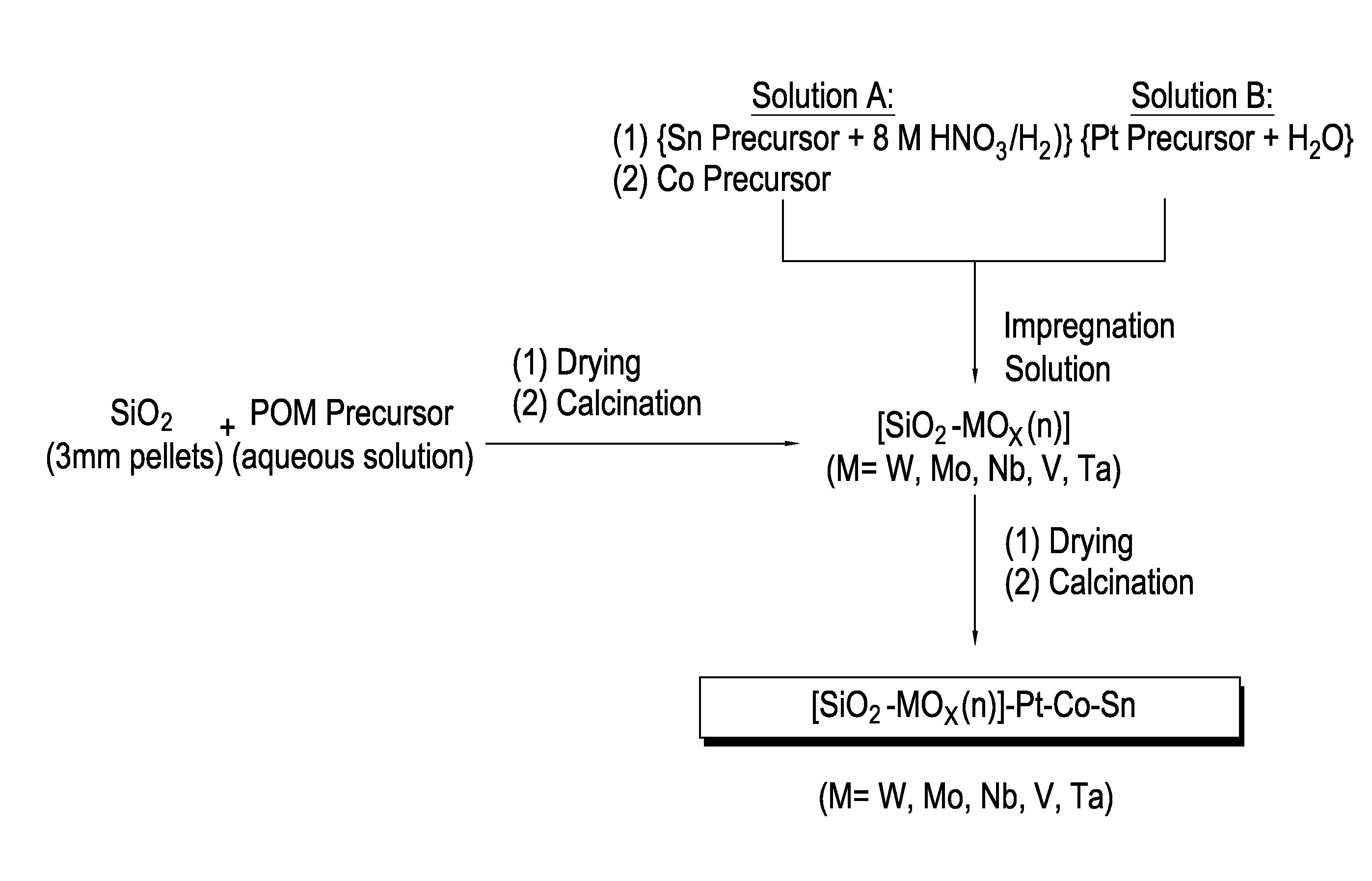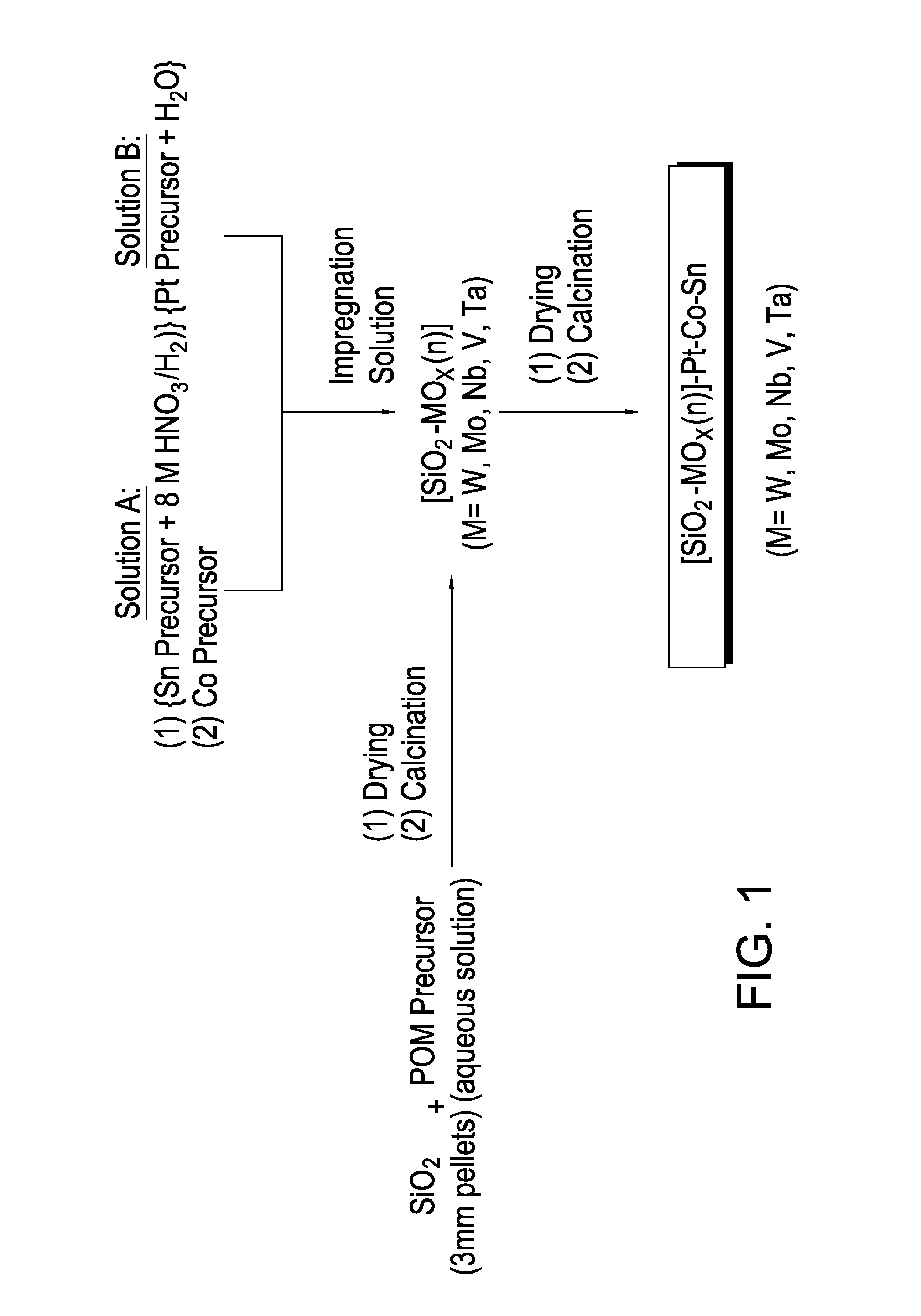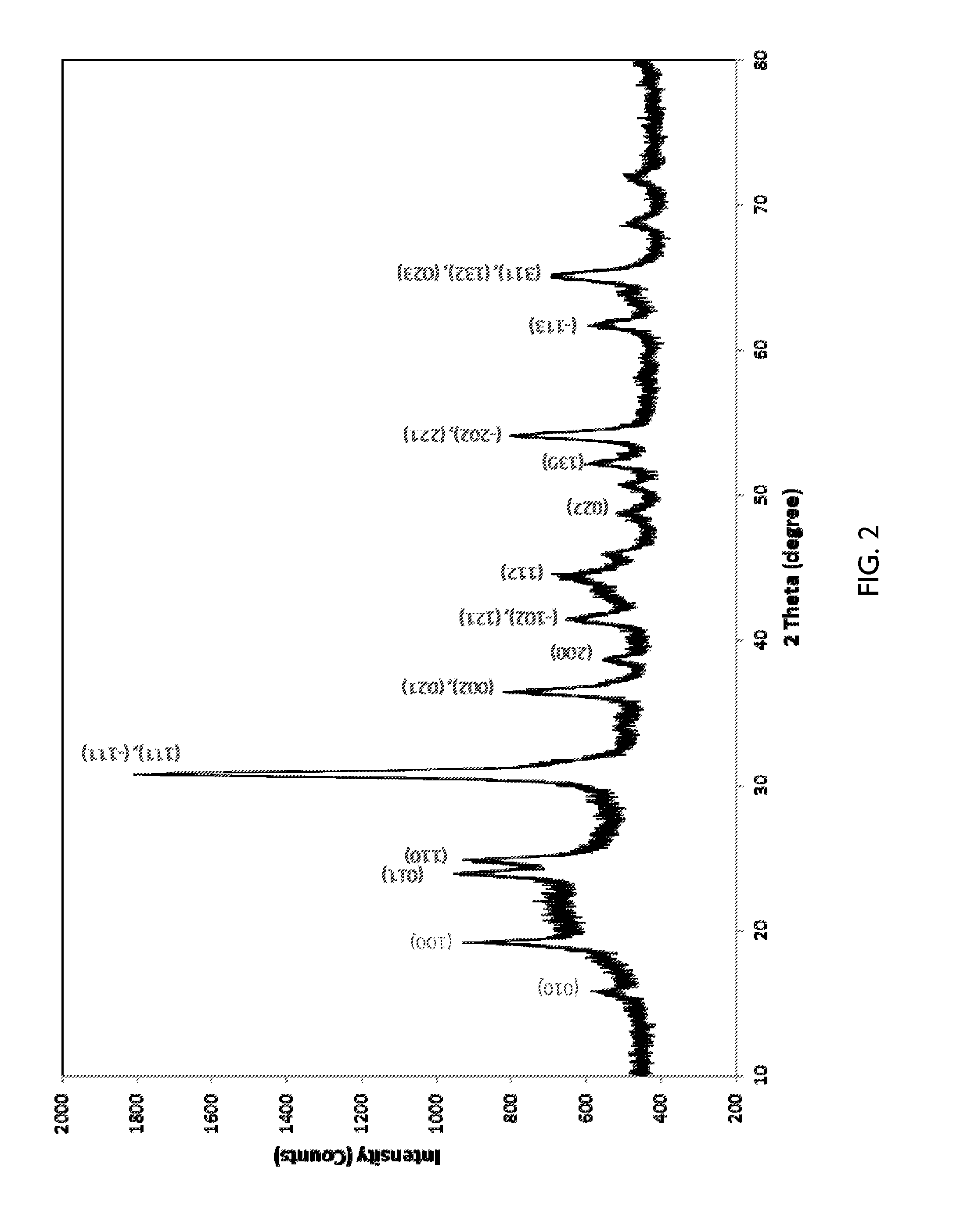Process for Producing Ethanol Using Hydrogenation Catalysts
a hydrogenation catalyst and process technology, applied in the field of catalysts, can solve the problems of affecting the commercial viability of catalysts, prohibitively expensive and/or non-selective catalysts, and excessive operating temperatures and pressures
- Summary
- Abstract
- Description
- Claims
- Application Information
AI Technical Summary
Benefits of technology
Problems solved by technology
Method used
Image
Examples
example 1
Pt(1.09)Co(3.75)Sn(3.25) / CoSnWO3 / SiO2
[0105]A. Preparation of Modified Support: Co(3.75)Sn(3.25)WO3(12) / SiO2
[0106]A summary of the catalyst preparation protocol is provided in FIG. 1. A metal impregnation solution was prepared as follows. First, a solution of tin salt was prepared by adding 8.56 g (0.0414 mol) of SnC2O4 (solid) slowly into 41 g (0.328 mol) of 8M HNO3 in a 300 ml beaker while stifling. 70 g of DI—H2O was then added to further dilute the solution. 28 g (0.0962 mol) of Co(NO3)2.6H2O solid was then added to the above solution with stirring. After the Co salt was completely dissolved, 19.47 g (0.079 mol W) of ammonium metatungstate (AMT) was added to the above solution. The mixture was then stirred at 400 rpm for another 5 minutes at room temperature.
[0107]The solution was then added to 120 g SiO2 support in a one-liter round flask by using incipient wetness techniques to provide a uniform distribution on the support. After adding the solution, the material was evacuate...
example 2
Pt(1.09)Co(3.75)Sn(3.25) / CoSnWO3 / SiO2
[0111]A. Preparation of Modified Support: Co(3.75)Sn(3.25)WO3(12) / SiO2
[0112]A metal impregnation solution was prepared as follows. First, a solution of tin salt was prepared by adding 15.67 g (0.045 mol) of Sn(IV)Cl4.5H2O (solid) into 100 g of DI—H2O. 30.23 g (0.104 mol) of Co(NO3)2.6H2O (solid) was added to the solution with stifling. After the cobalt salt was completely dissolved, 21.03 g (0.085 mol of W) of AMT was added to the solution. The mixture was then stirred at 400 rpm for another 5 minutes at room temperature.
[0113]The resulting solution was then added to 129.6 g. SiO2 support in a one-liter round flask by using incipient wetness techniques to provide a uniform distribution on the support. After adding the metal solution, the material was evacuated to dryness using a rotary evaporator with bath temperature at 80° C. and vacuum at 72 mbar for 2 hours, followed by drying at 120° C. for 12 hours under circulating air and calcination at...
example 3
Pt(1.09)Co(3.75)Sn(3.25) / CoSnWO3 / SiO2
[0117]A. Preparation of Modified Support: Co(3.75)Sn(3.25)WO3(12) / SiO2
[0118]A metal impregnation solution was prepared as follows. First, a solution of tin salt was prepared by dissolving 2.476 g of Sn(II)Cl2.2H2O (solid) into the 25 g of DI—H2O. 7.559 g of Co(NO3)2.6H2O solid was add to the solution with stifling. After the Co salt was completely dissolved, 5.257 g of AMT was added to the solution. The mixture was then stirred at 400 rpm for another 5 minutes at room temperature.
[0119]The resulting solution was then added to 32.4 g SiO2 support in a one-liter round flask by using incipient wetness technique to provide a uniform distribution on the support. After adding the metal solution, the material was evacuated to dryness using a rotary evaporator with bath temperature at 80° C. and vacuum at 72 mbar for 2 hours, followed by drying at 120° C. for 12 hours under circulating air and calcination at 600° C. for 8 hours. Temperature Program: in...
PUM
| Property | Measurement | Unit |
|---|---|---|
| pressure | aaaaa | aaaaa |
| temperature | aaaaa | aaaaa |
| dimension | aaaaa | aaaaa |
Abstract
Description
Claims
Application Information
 Login to View More
Login to View More - R&D
- Intellectual Property
- Life Sciences
- Materials
- Tech Scout
- Unparalleled Data Quality
- Higher Quality Content
- 60% Fewer Hallucinations
Browse by: Latest US Patents, China's latest patents, Technical Efficacy Thesaurus, Application Domain, Technology Topic, Popular Technical Reports.
© 2025 PatSnap. All rights reserved.Legal|Privacy policy|Modern Slavery Act Transparency Statement|Sitemap|About US| Contact US: help@patsnap.com



